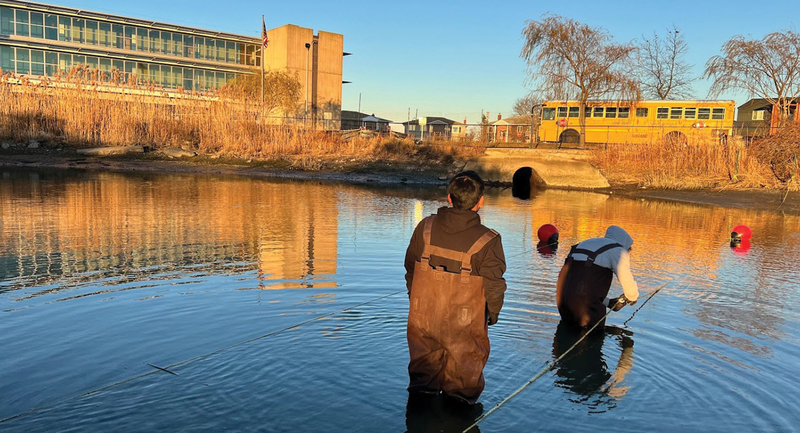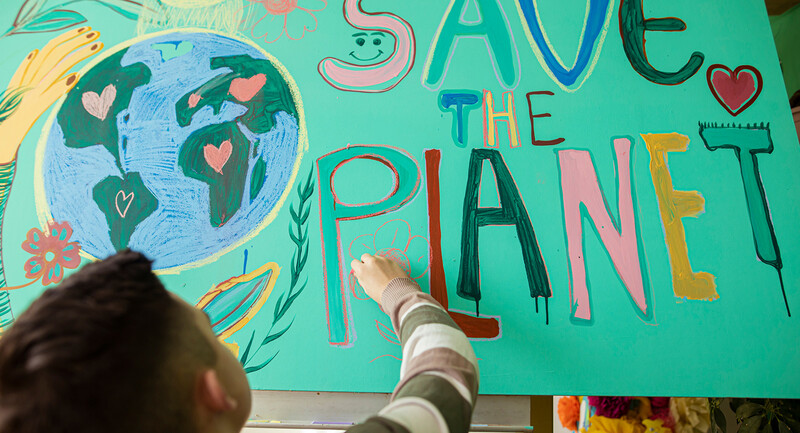Teaching elementary children to read and understand grade-level content is one of the most difficult tasks that American educators have on their hands. In 2022, only 32 percent of the nation’s 4th grade public school students were reading at or above proficiency, down from 38 percent in 2015 (U.S. Department of Education, 2022). These statistics have made the teaching of reading a priority at many elementary schools, meaning that the teaching of subject areas such as science or social studies on a regular basis has been curtailed. But this creates its own problems—in science, for example, only 36 percent of 4th graders scored at or above proficient in subject knowledge, engaging in scientific inquiry, and conducting scientific investigations in real-world contexts, according to the 2019 National Assessment of Educational Progress (U.S. Department of Education, 2019). The importance of content-based literacy instruction has been acknowledged, but much of the research and strategies focus on students being able to read at grade level.
In many elementary school classrooms, teachers work in silos, treating each course separately. The tendency is to assign language and literacy skills to English language arts and reading teachers only, but it’s difficult for an elementary teacher to be responsible for all the standards and objectives in each content area without creating a system that allows for content-area instruction in reading. How do we bridge these silos between content areas? How do we contextualize English language arts standards and provide equitable instruction across the subject areas, so we teach more than just isolated skills, facts, and figures?
As a language and literacy consultant, I recommend integrating the teaching of reading and academic content. This is especially necessary for science, where only 17 percent of K–3 students and 35 percent of 4th–6th grade students are receiving science instruction all or most days of the school year (Smith, 2020). Using science texts, while simultaneously teaching and reinforcing the skill of reading, is like feeding two birds with one worm. Elementary teachers can elevate content knowledge to its primary role in the science of reading by engaging in five instructional practices I’ve developed based on my work with teachers: Diversifying read-aloud content for K–5 students, developing high-quality comprehension questions aligned to content knowledge and skills, dissecting academic- and domain-specific vocabulary, discussing word knowledge as part of explicit instruction, and desegregating language and literacy skills and subject-area content, especially science. Let’s look more closely at why this works.
1. Diversify Read-Aloud Content
When I talk about diversifying content, I mean it in multiple ways. In teaching reading, most teachers lean more toward fiction texts, and most texts used to reinforce reading comprehension do not feature diverse characters/people or authors. The focus on science texts with diverse characters/people or authors allows the teacher to provide science content knowledge while simultaneously providing exposure to diverse viewpoints that have impacted the science world. In short, we diversify the genre and the people represented.
The close reading of STEM literature can be an effective method for ensuring that students have a conceptual understanding of science and engineering practices, disciplinary core ideas, and crosscutting concepts (3D Learning as cited by NGSS). For students who haven’t yet learned to read, content knowledge can be delivered through read-aloud texts. As Jim Trelease writes in The Read-Aloud Handbook (2006):
There are really only two efficient ways to get words into a person’s brain: either through the eye or through the ear. Since it is years before the eye in a young child is used for reading, the best source for ideas and brain building becomes the ear. What we send into that ear becomes the ‘sound’ foundation for the rest of the child’s ‘brain house.’ (p. 4)
There are many wonderful read-aloud books by diverse authors and featuring diverse characters that will help K–5 students gain language understanding and learn about science concepts. A few I recommend are:
Marie’s Ocean: Marie Tharp Maps the Mountains Under the Sea by Josie James (Earth Science, K–2nd grade)
Buzzing with Questions: The Inquisitive Mind of Charles Henry Turner by Janice N. Harrington and Theodore Taylor III (Life Sciences, 3rd–5th grade)
Classified: The Secret Career of Mary Golda Ross, Cherokee Aerospace Engineer by Traci Sorell and Natasha Donovan (Physical Science, K–2nd grade)
Patricia’s Vision: The Doctor Who Saved Sight by Michelle Lord and Alleanna Harris (Engineering, 3rd–5th grade)
2. Develop High-Quality Comprehension Questions
Teachers can only ensure that students know, understand, and are able to apply science content and concepts if their instruction includes domain-specific language and critical-thinking questions. Teachers must systematically curate and closely read STEM literary nonfiction children’s books and create strategic questions that are intentionally coded for Depth of Knowledge (DoK) level beforehand and scaffolded. These questions should query students’ knowledge and understanding of why and how the engineer, scientist, or other professional they are reading about has demonstrated 3D Learning practices. This process is paramount to helping students to build, access, and transfer knowledge.
“The ultimate goal of modeling how to ask and answer deeper-thinking questions is to teach our students how to formulate their reasoning and become more empowered in the learning process,” writes Karin Hess in Rigor by Design, Not Chance (2023, p. 34). For example, in the read-aloud book, Patricia’s Vision: The Doctor Who Saved Sight (Sterling Children’s Books, 2019), students learn how ophthalmologist Patricia Bath used engineering practices to invent the Laserphaco Probe that removes cataracts from the eyes and restores eyesight. A teacher might develop questions to ask students about the techniques and tools used by the doctor (What tools did Bath use to create her laser probe?), ask them to analyze and interpret data from the text (What was Bath measuring for when she used the different lasers?), or ask students to explain the solutions Bath designed (Can you describe Bath’s solution for removing cataracts from her patient’s eyes?). When teachers code questions according to the level of complexity and content, students are better able to use critical-thinking skills when communicating knowledge about which engineering practice is being employed and how the crosscutting concept is represented. The complexity of the question provides the teacher with feedback on students’ ability to engage in strategic thinking and apply knowledge of the engineering practice versus reciting it from memory.
When teachers code questions according to the level of complexity and content, students are better able to use critical-thinking skills when communicating knowledge.
3. Dissect Academic- and Domain-Specific Vocabulary
Vocabulary knowledge is a critical element in reading comprehension (Block & Mangieri, 2006). Teachers need to know what words to choose and how and when to provide explicit instruction, specifically contextual clues and identifying morphological structures (word families) (Rasinski et al., 2011). Particularly when learning about science and engineering practices, students require systematic and explicit instruction in structural analysis (word parts) and contextual clues.
For example, when students plan and carry out investigations, they learn about the variables that engineers and scientists use in their experiments. To explain what the word variables means, a teacher might ask students to look at the root var, which means to change. Explicit instruction in the meaning, discussion, and context of the root var can help students understand that different elements, features, or factors may account for changes in the experiment. Teachers can also point out additional words that share this root: vary, various, variant, variation, variety, and variable.
As a speech/language pathologist, I learned very early that having word consciousness was a precursor to personal vocabulary development and comprehension of complex texts. When providing professional development for teachers on the science of reading, I always begin with this essential question: “How are words like puzzles?” When word parts are joined together, they make a word, just like puzzle pieces make a picture (Bailey, 2015). This notion captures the generative approach to vocabulary development. I encourage teachers to ask their students this question, which supports conceptual understanding of the importance of vocabulary.
4. Discuss Word Knowledge
Elementary teachers should also provide explicit instruction in how words and language function within different types of subjects and contexts. The science and engineering disciplines incorporate a wealth of academic vocabulary, and students are much more well served if they understand how breaking down word parts can unlock meaning and application. Scientific inquiry can only happen when students know the what, why, and how of their actions. To facilitate comprehension of this essential word knowledge, I created a brain-friendly resource that identifies a group of words inclusive of generative roots and affixes connected to the network of ideas defined within the science and engineering practices. This tool can help teachers explicitly instruct students in how to apply knowledge of how words work when encountering unfamiliar terms and how to look for patterns. When teachers focus on word parts, they give students keys to many more words.
5. Desegregate Language and Literacy in Science
As a practice, language and literacy have been instructionally segregated from the content areas of science, social studies, and math. Reading is thought of as a subject rather than the skill of accessing knowledge within all subjects. Teachers within these different areas might not provide instruction in how to closely read texts, or they may not explicitly teach vocabulary or use comprehension strategies to help students access the content.
If educators want all elementary students to be proficient in reading by 4th grade and to comprehend complex text in all content areas, there must be an equitable instructional movement to desegregate language and literacy in those subjects. With the focus on the science of reading, educators must put an equal emphasis on using the content areas of science and social studies to address reading fluency, vocabulary teaching, and comprehension monitoring. This movement can start with the five instructional practices outlined here. If teachers can use science content to focus on the skills of language and literacy, the seeds of language and literacy can be sown in every content area.









